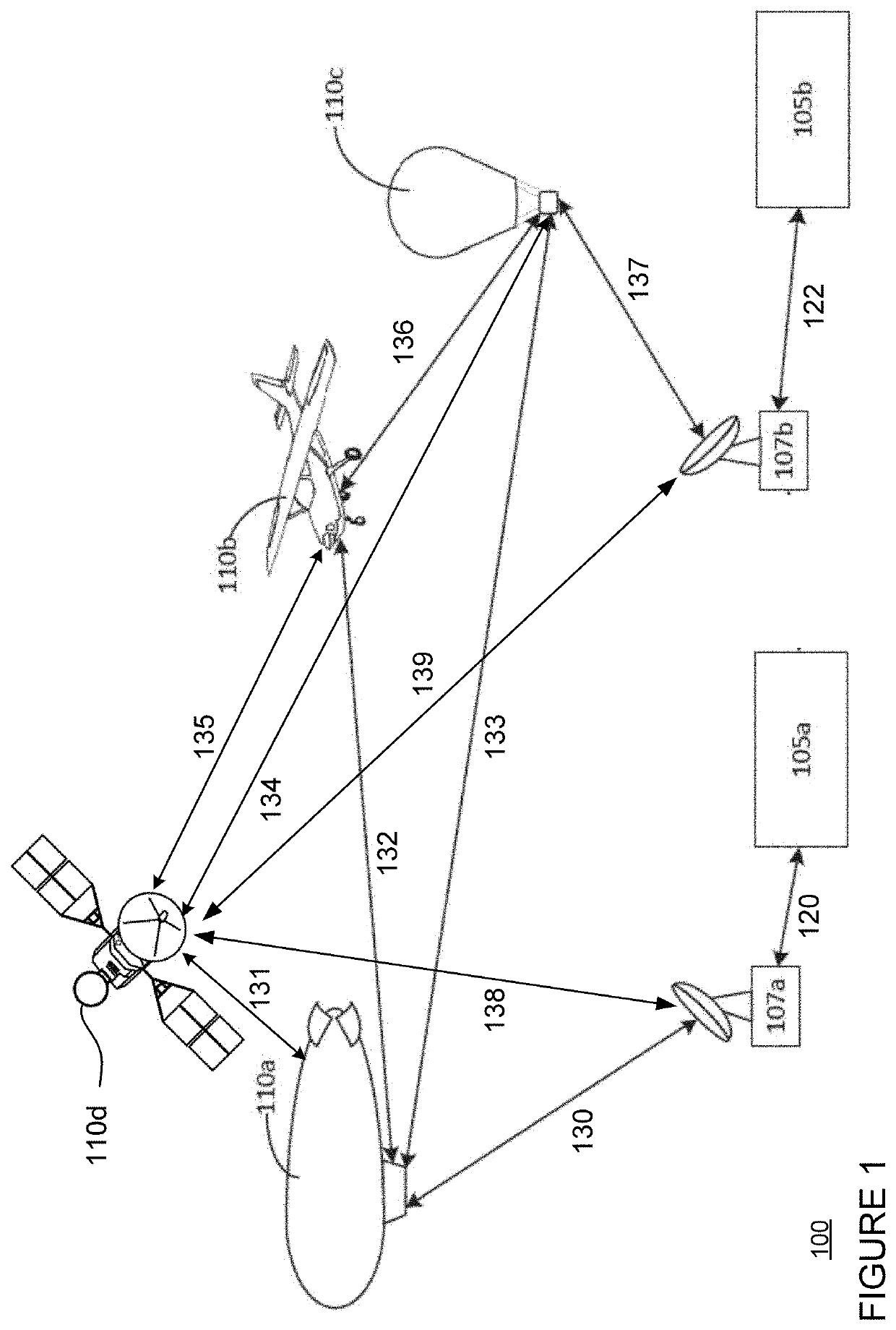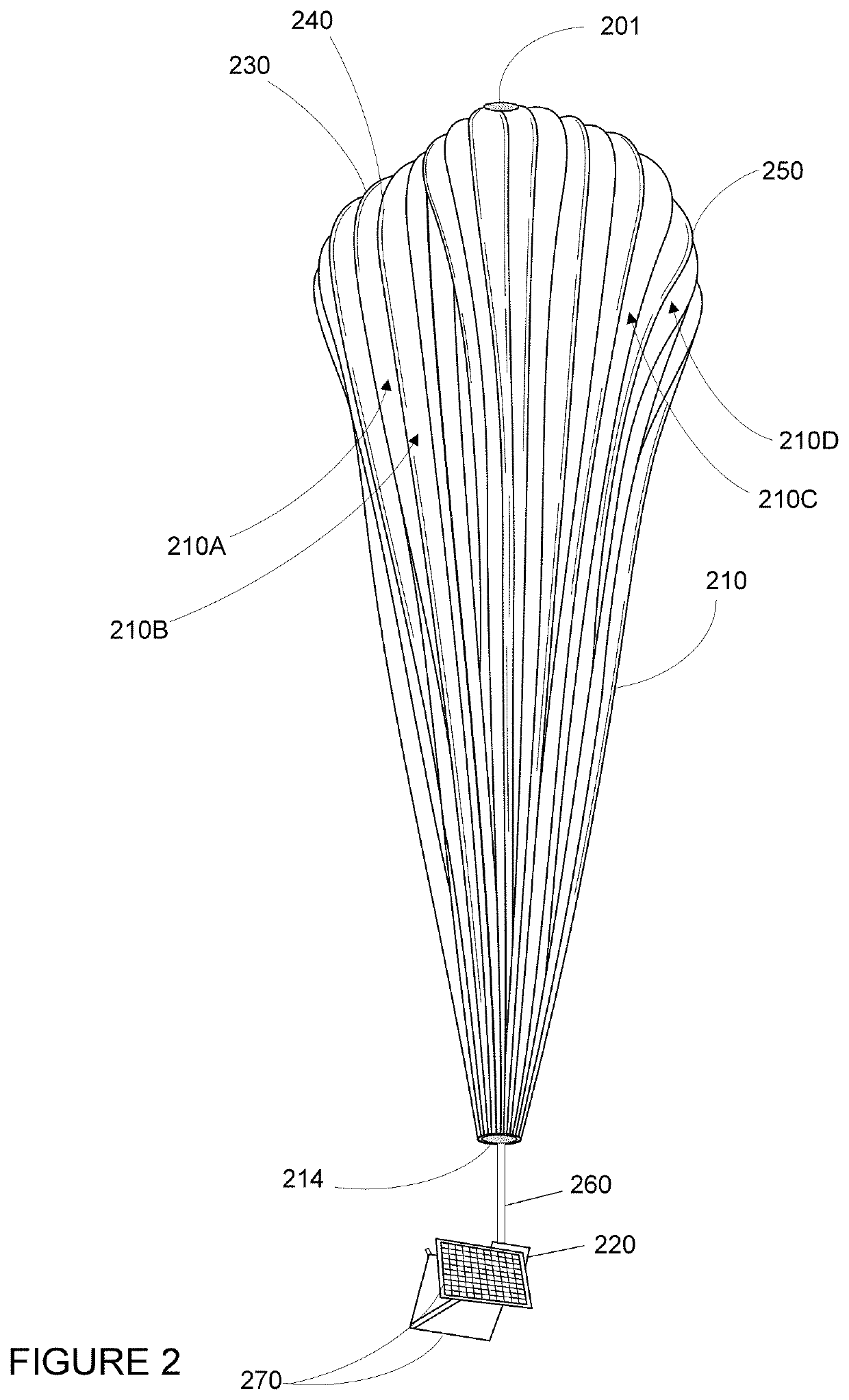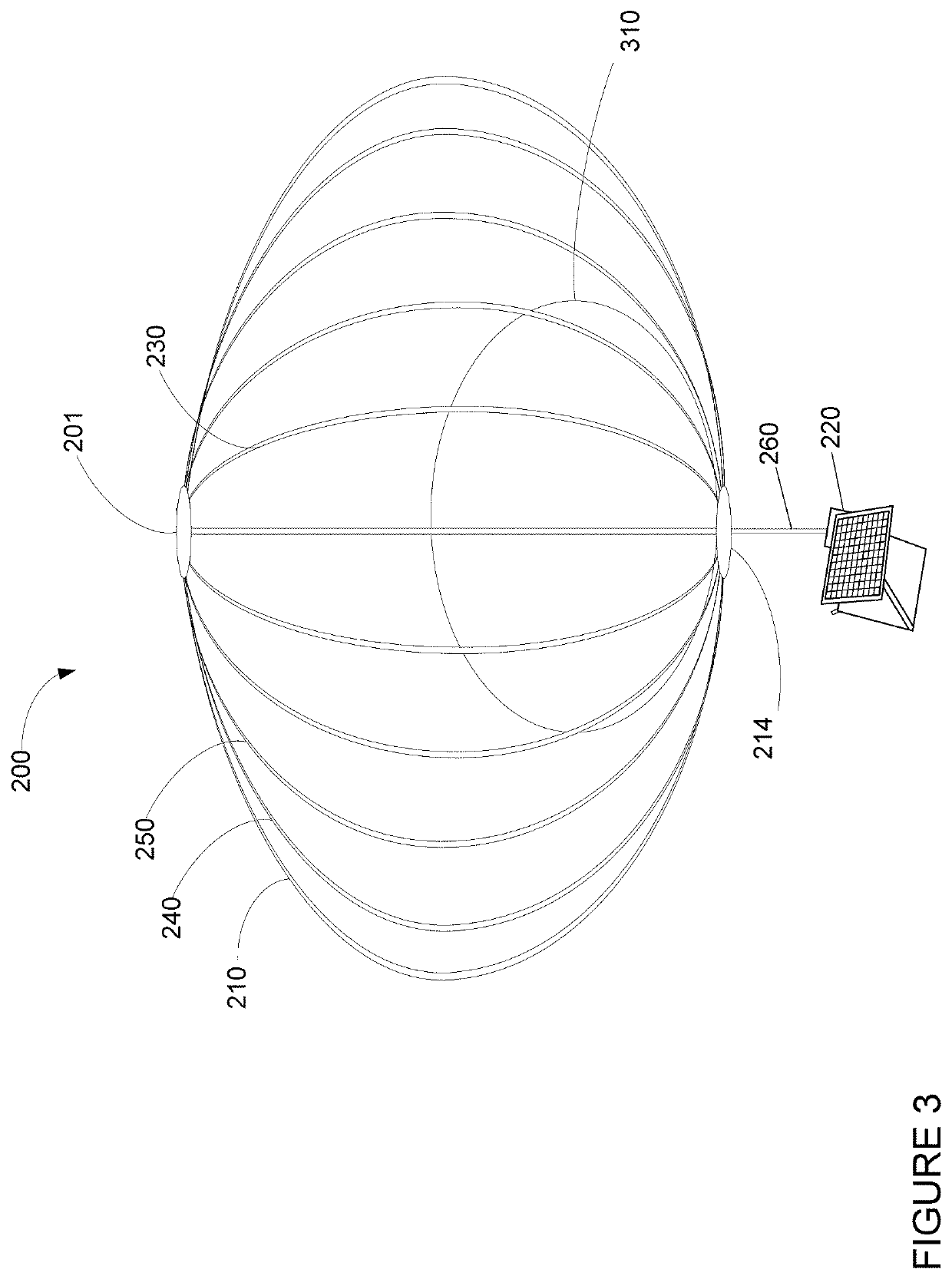Flight termination system for aerial vehicles
a technology for termination systems and aerial vehicles, applied in parachutes, balloon aircrafts, emergency apparatus, etc., can solve the problems of unreliable and/or costly, unavailability of data connectivity, etc., and achieve the effect of reducing the likelihood of damage to the pair and reducing the amount of drag
- Summary
- Abstract
- Description
- Claims
- Application Information
AI Technical Summary
Benefits of technology
Problems solved by technology
Method used
Image
Examples
example aerial vehicle
[0032]FIGS. 2 and 3 are examples of an aerial vehicle 200 which may correspond to HAP 110c, again, depicted here as a balloon. For ease of understanding, the relative sizes of and distances between aspects of the aerial vehicle 200 and ground surface, etc. are not to scale. As shown, the aerial vehicle 200 includes an envelope 210, a payload 220 and a plurality of tendons 230, 240 and 250 attached to the envelope 210. The envelope 210 may take various forms. In one instance, the envelope 210 may be constructed from materials (i.e. envelope material) such as polyethylene that do not hold much load while the aerial vehicle 200 is floating in the air during flight. Additionally, or alternatively, some or all of envelope 210 may be constructed from a highly flexible latex material or rubber material such as chloroprene. Other materials or combinations thereof may also be employed. Further, the shape and size of the envelope 210 may vary depending upon the particular implementation. Addi...
example flight termination
[0038]As noted above, in order to termination flight of an aerial vehicle, a flight termination system may be used. FIG. 4 is an example cross-sectional view of aspects of a flight termination system 400 and aerial vehicle 200. The flight termination system may include a heat source mounted on an aerial vehicle. For instance, as shown in FIG. 4, a parachute 430 and a heat source 410 may be mounted at a top plate 201 of the envelope 210 of the aerial vehicle 200. The heat source may be such that it is capable of melting an opening, represented by the area 440, in the envelope 210 using a fluid 412 such as hot air or other gasses. In fact, the heat source 410 may actually be able to melt through several layers of material, including, for example the envelope 210 as well as the ballonet 310.
[0039]As shown in the top-down view of FIG. 5, the flight termination system 400 may also include a second heat source 420 may also be used. In order to create a second opening in the envelope...
PUM
 Login to View More
Login to View More Abstract
Description
Claims
Application Information
 Login to View More
Login to View More - R&D
- Intellectual Property
- Life Sciences
- Materials
- Tech Scout
- Unparalleled Data Quality
- Higher Quality Content
- 60% Fewer Hallucinations
Browse by: Latest US Patents, China's latest patents, Technical Efficacy Thesaurus, Application Domain, Technology Topic, Popular Technical Reports.
© 2025 PatSnap. All rights reserved.Legal|Privacy policy|Modern Slavery Act Transparency Statement|Sitemap|About US| Contact US: help@patsnap.com



